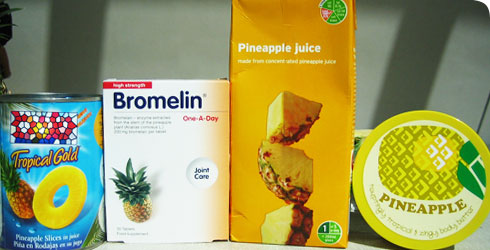Uses
Today, pineapple ranks among the most widely cultivated tropical fruits, growing best between 25° N and S latitude where rainfall ranges from 1,000 to 1,500mm.
Fruits are often eaten fresh, but much of the commercial harvest is canned. Parts of the plant are used as cattle food playing an important role in the economy of the producer countries.
Ananas comosus has medicinal uses attributed to the presence of bromelain, a proteolytic enzyme. It is currently marketed under the name Ananase to treat inflammation and related pain.
Sweetened juice promotes digestion and prevents sea sickness according to some users in Venezuela.
Serotonin, a vasoconstrictor, is also present in this fruit.
Many activities are attributed to pineapple fruit including:
- antihelmintic (vermifuge)
- antiscorbutic (treatment for scurvy)
- cholagogic (promotes flow of bile)
- decongestant
- diaphoretic (causes perspiration)
- diuretic
- ebolic (smooth muscle stimulant)
- purgative
- refrigerant (relieving fever or producing cooling sensation)
Philippine natives fashion a fine cloth from Ananas comosus fibres. Coarser fibres are used in the manufacture of ropes.
Pineapple fibre can also be used to make pulp for paper.
A fermented beverage is made from pineapple fruits in Panama, Venezuela and throughout much of Amazonia.
Ananas comosus is also used to produce cosmetics and creams.
